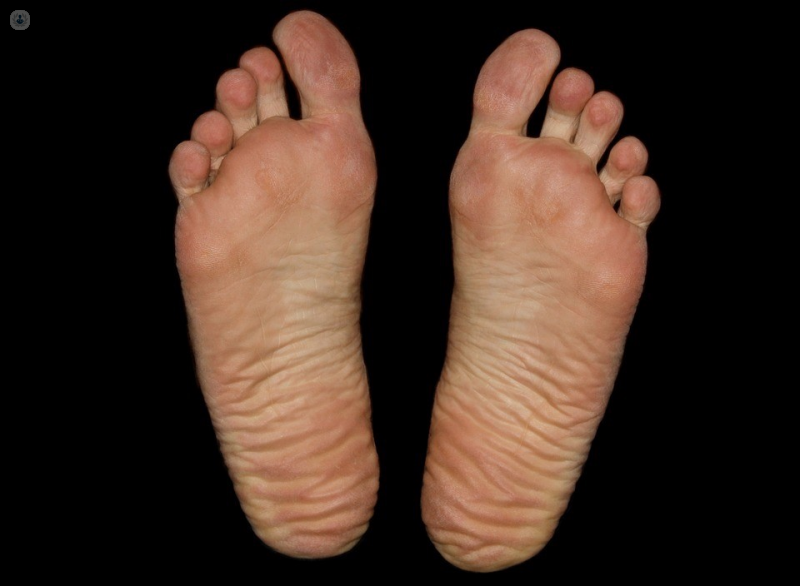Flat feet: an expert’s guide
Written by:Feet can come in all shapes and sizes. While some people have high insteps, others’ feet are totally flat. Why does this happen? Can flat feet be problematic? And what can be done about them? Expert orthopaedic surgeon Mr Billy Jowett is here to explain.

What are flat feet?
The inside of the foot usually has an arch between the base of the toes and the heel. This arch appears during childhood and varies in height among different people. Flat feet are a condition in which this arch is not present, either because it never developed or because it has flattened over time.
Why do flat feet develop?
Flat feet can develop for different reasons. A coalition (an abnormal link between two bones in the foot) can mean that the arch never develops. Alternatively, some individuals’ arches gradually collapse after they reach adulthood due to a condition called tibialis posterior tendinopathy, in which the tendon that supports the arch fails.
What symptoms does it cause?
Flat feet have three key symptoms:
- Foot shape – the most obvious symptom. In the case of tibialis posterior tendon dysfunction, the foot becomes flat over time as the medial arch gradually disappears.
- Pain – pain may flair up following sprains and injuries in the case of a coalition. In the case of tibialis posterior tendinopathy, pain may start before the arch starts to flatten. Once flat, pain can occur on the outer part of the ankle as tissue becomes trapped between bones. It should be noted that flat feet are not always painful.
- Instability – the foot and ankle can feel unstable and may actually give way, either due to pain or because the tibialis posterior tendon is no longer strong enough to provide support.
If the foot remains flat and unsupported, arthritis can develop in the ankle joint and the joints under and around the ankle.
What options are there for treatment?
Non operative:
- Footwear with a good arch and laces can provide extra support.
- Insoles (orthotics) can benefit adults with flat feet caused by tibialis posterior tendinopathy.
- Physiotherapy can likewise be helpful for tibialis posterior tendinopathy, with stretching and strengthening exercises.
- Pain-relieving medication may also be recommended to combat any symptoms of pain (follow your doctor’s instructions for when to take these!).
Operative (surgical):
If these measures do not resolve the patient’s symptoms, surgery may be recommended. There are three main types of surgery:
- Tibialis posterior tendon reconstruction – the tibialis posterior tendon can be replaced by the tendon responsible for bending the smaller toes (this is usually connected to the tendon that bends the big toe, meaning that it will still be possible to flex all the toes). This procedure also involves moving one or more of the bones in the foot to adjust their position.
- Triple arthrodesis – surgical fusion of three joints in the foot. This may be needed if the joints are stiff or arthritic.
- Excision of tarsal coalition – if the coalition is the cause and has become painful and conservative treatment hasn’t helped.
If you would like a consultation to see what can be done about your flat feet, visit Mr Billy Jowett’s Top Doctors profile to book an appointment.


